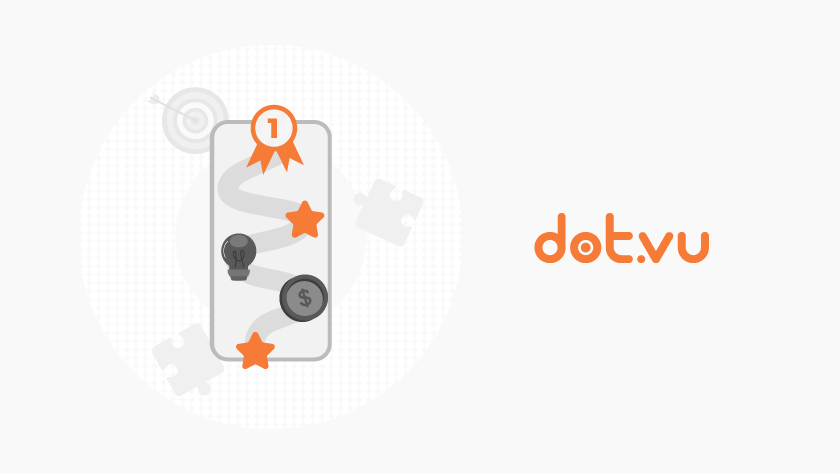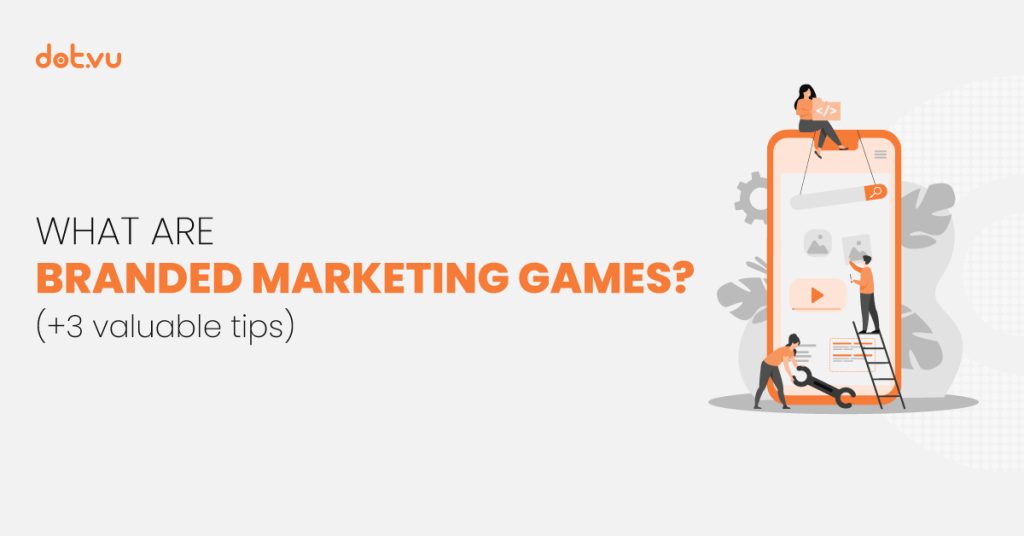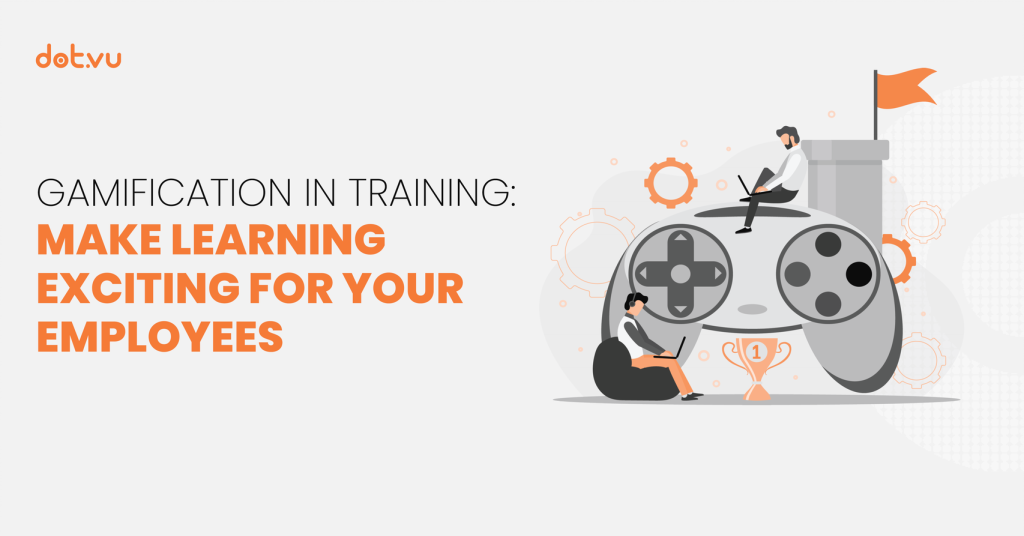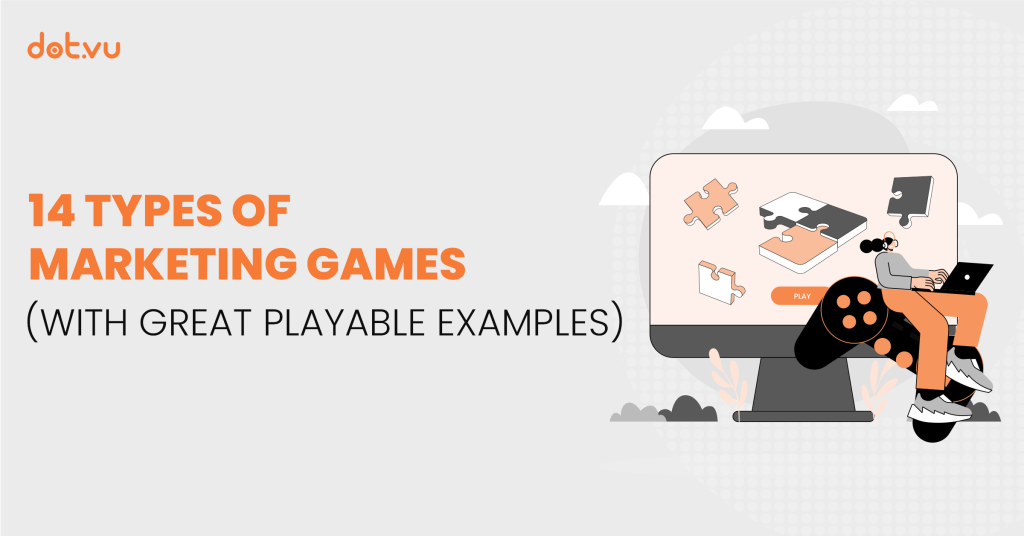
Before we introduce the different types of Marketing Games, let’s explore the term “gamification.” The word gamification has been very trendy for the past couple of years. Companies around the world started to use gamification to motivate employees, attract new customers, increase brand loyalty, and so on. The reason gamification in marketing is so popular is that it works incredibly well. Indeed, gamification can boost browsing time on your website by up to 30%. That is quite amazing! The allure of gamification lies in its ability to tap into fundamental aspects of human psychology — the desire for achievement and a sense of enjoyment. When customers find something enjoyable, challenging, and rewarding, they are more likely to actively participate and, consequently, contribute to the overarching goals of a business. So, if you haven’t started yet, you need to jump in with both feet!
In this article, you will learn about different types of Marketing Games; how they work, what their main benefits are, when you should use them, and so on. The goal is to give you valuable knowledge to get you started on your journey in marketing through games within your current Interactive Content strategy.
What are Marketing Games?
Marketing Games are gamified content that is used to create a memorable experience for users. They are mini online games used by companies to attract new customers, engage their audience, promote their products, or boost their email lists.
In other words, the idea behind Marketing Games is to delight potential and current customers while they are interacting with your brand. By delighting and engaging them with gamified experiences, you increase the chance to convert web browsers into engaged visitors, engaged visitors into customers, customers into loyal buyers, and loyal buyers into advocates.
These interactive games leverage the principles of gamification, integrating elements like competition, rewards, and challenges to capture the attention and interest of the target audience. The goal is not only to entertain but also to forge a deeper connection between the brand and its customers.
One of the key advantages of Marketing Games is their ability to generate valuable user data and insights. As participants engage with the games, their actions, preferences, and behaviours can be tracked and analysed. This data can then be used to tailor future marketing strategies, providing a more personalized and effective approach.
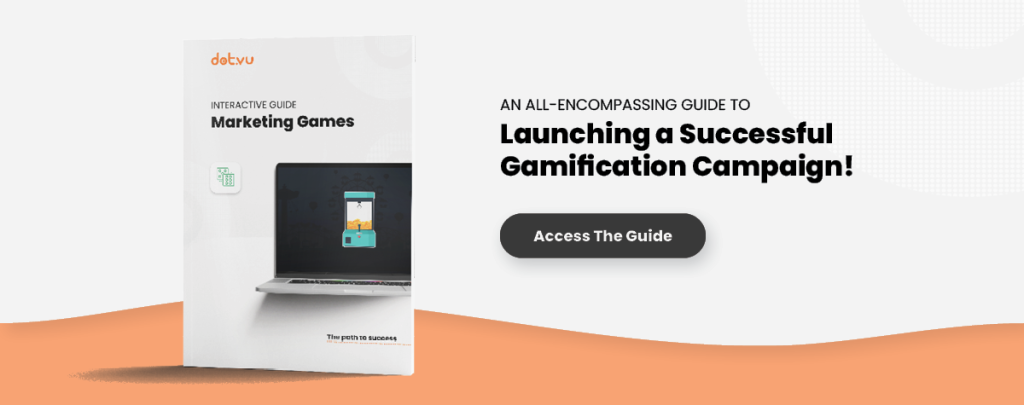
Now let’s dive into 14 Marketing Games examples.
14 Types of Marketing Games to engage your customers
There are different types of games for marketing available out there! Depending on your marketing goals, resources, desired level of involvement, duration, and other pre-established factors, you might want to choose one type over the others.
When picking a gamification software, you should consider different factors like:
- does it support the type of Marketing Game you want to create
- does it have the features you require
- level of support
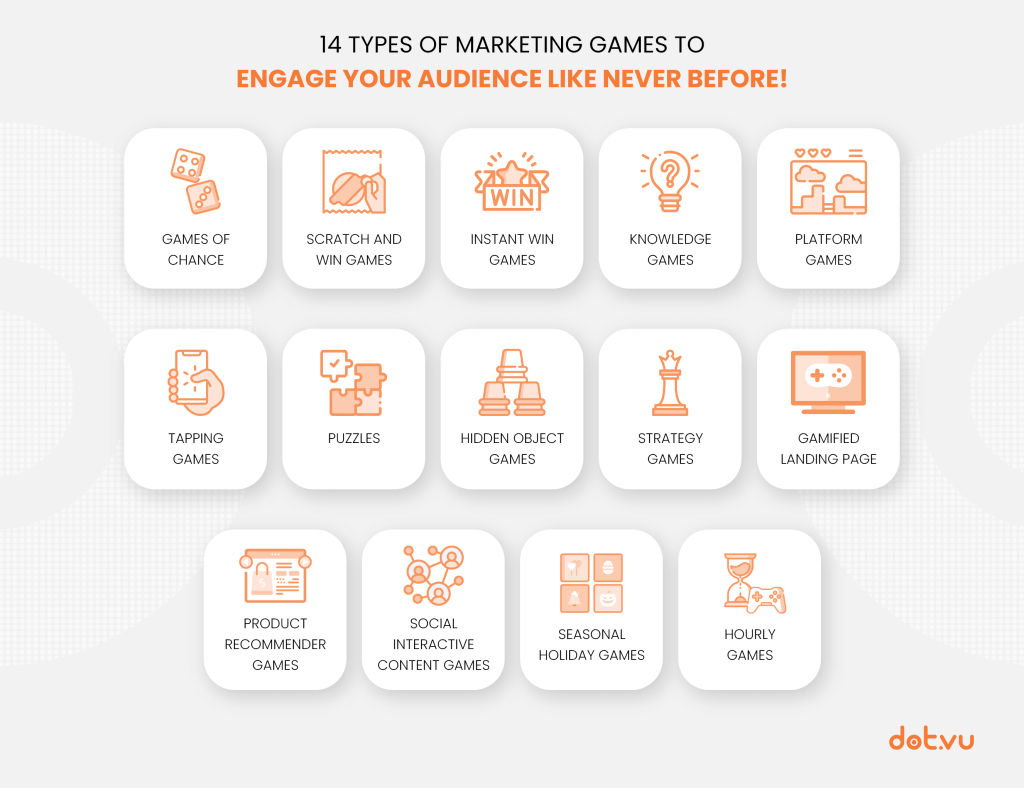
1. Games of chance
One of the many examples of Marketing Games is a Game of chance. Games of chance are games where the results are based on randomization. Playing games of chance doesn’t require special skills since pure luck (with randomization devices) solely determines the outcome.
Companies can use games of chance to attract potential customers, engage website visitors, boost sales and grow their email list. Games of chance often have an instant-win feature to boost participation. For example, participants can win discount codes, free items, free memberships, and so on when playing these types of Marketing Games. Because of that, they are one of the best types of Marketing Games to grow your email list. You can grow your email list by either gating the entire game with a lead form or gating the results.
There are many different examples of fun Marketing Games of chance, such as dice games, card games, wheels of fortune, or numbered balls drawn from a container.
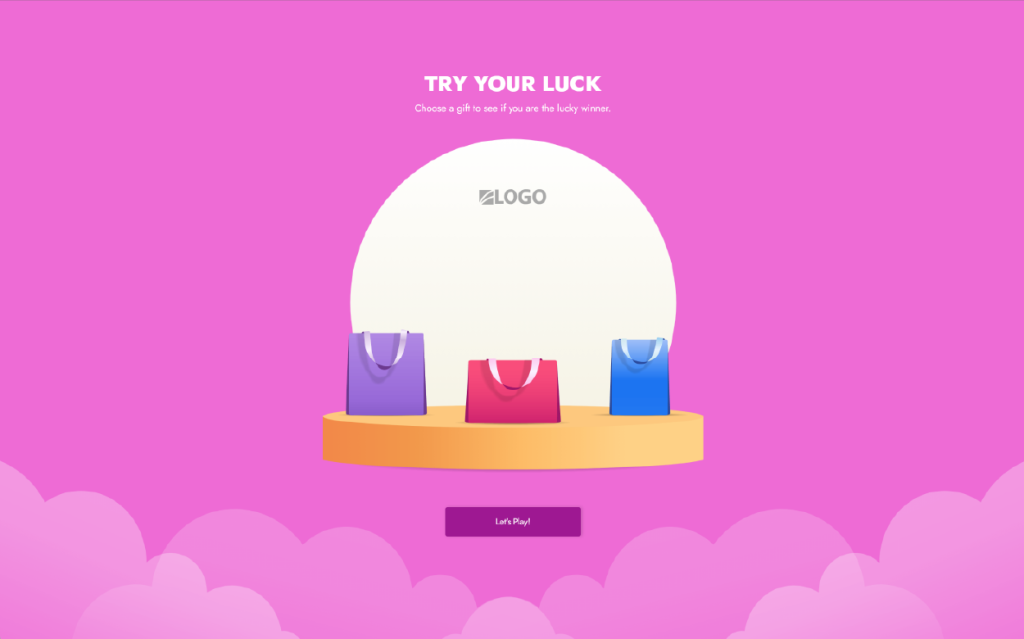
2. Scratch and Win Games
Scratch and Win games are a popular form of advergaming. Interactive campaigns leverages the psychological principle of instant gratification, which is deeply ingrained in human behaviour. The immediate reward of scratching off and discovering a prize triggers a positive emotional response, creating a memorable and enjoyable experience for participants.

Moreover, the versatility of Scratch and Win games allows businesses to customize promotions for various objectives, from product launches to inventory clearance. Participants virtually scratch off a surface on their screens to reveal whether they’ve won a prize or not. For example, you can use a scratch and win game to promote new products, discounts, or exclusive offers.
3. Instant Win Games
Similar to scratch and win, instant win games provide participants with immediate feedback on whether they have won a prize. These games often involve a simple action, like spinning a virtual wheel or clicking a button, to reveal the outcome. Instant win games are highly effective in generating excitement and can be used to promote time-sensitive offers. It’s all about that instant rush of excitement!

By infusing the prizes with the essence of the brand, businesses can build a positive association that goes beyond the virtual game. In essence, these games become a tool for brands to inject fun into the online journey.
Pro Tip: Incorporate a countdown timer or limited-time bonuses to create a fear of missing out.
4. Knowledge Games
Knowledge games are fun Marketing Games where you want to test the knowledge of participants on a specific subject or on random facts. You already know lots of knowledge games such as Fill-the-Words, Jeopardy, Trivia Games, Maze Quiz, and so on.
Knowledge games are one of the best types of Marketing Games to attract potential customers to your website and boost engagement. Why? Because humans always want to test their knowledge. So, these types of online branded games are easily shared on social media and get lots of clicks.
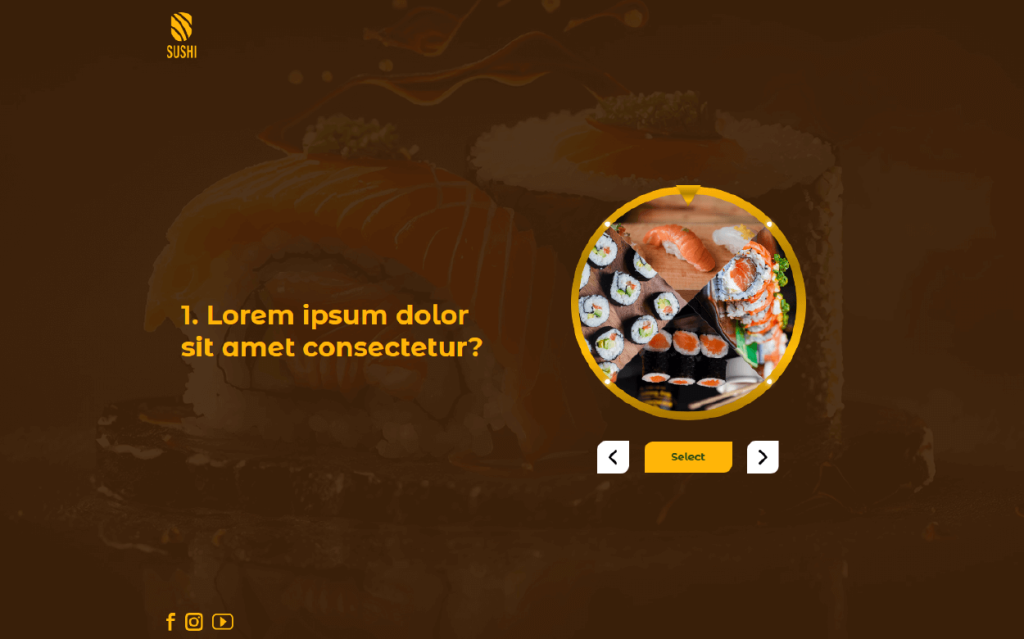
5. Platform Games
Platform games are among the most popular types of Marketing Games because they are simply so fun to play! Platforms games are 2D games where you move a character through a specific environment. You control the character by being able to jump, climb, move, and/or dodge. The goal is often to avoid obstacles while collecting items. Does it ring a bell? Yes, that’s right, Mario Bros is one of the most popular examples of a platform game.
Platforms games are one of the most engaging types of Marketing Games out there. They are really delightful for customers so they can also be used for brand recognition and brand loyalty.
Platform games are also a great asset to your seasonal marketing strategy because you can adapt them to different holidays. For example, you could have a platform game for Easter where the character is a bunny that needs to collect eggs and avoid trunks of trees.
.
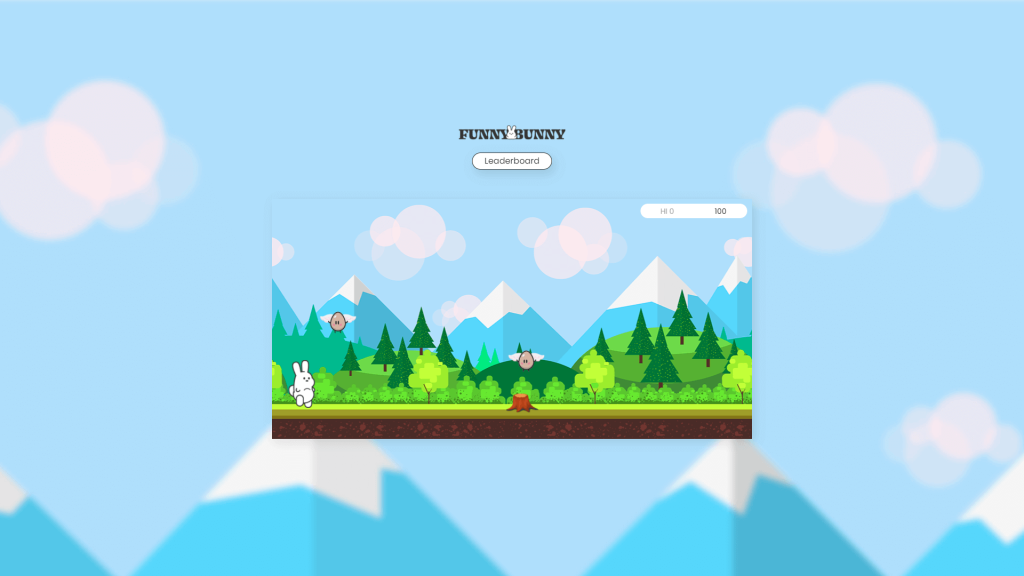
6. Tapping Games
Tapping Games, similarly to Platform Games, are also very fun Marketing Games that are highly engaging. In a tapping game, participants tap (or click) as fast as possible to collect valuable items while trying to avoid unwanted ones.
These types of games are extremely popular because they harness rapid growth, speed, and reward. Participants can become better and collect lots of points fast. Moreover, participants can compete with their friends by finding out who can keep the best score.
A very effective way to boost participation in your tapping games is to add a leaderboard. Participants will want to compete to find out if they can be in the 10 best spots.
Looking for more insights? Don’t miss our latest blog on interactive websites and how Marketing Games tie into it!

7. Puzzles
We all know what puzzles are! It’s images that are split into smaller images and mixed that we need to put back together. To goal of this type of Marketing Games is to use logic to put the pieces back together. There are traditional puzzle games but also puzzle games that are more a by-product of this type of Marketing Game such as Spot-the-difference games.
Marketing Games always bring fun to puzzles, and they can serve as a creative way to introduce a new product or ensure that your logo remains memorable. To enhance engagement further, consider adding a timer to your puzzles, requiring participants to finish the puzzle before the timer expires!

8. Hidden Object Games
A hidden object game is any type of branded game where participants need to find hidden objects. For example, that includes seasonal Marketing Games where participants need to find all the Candy Canes hidden in your Christmas image. Another example of a hidden object game could involve a cup game, where participants observe a prize beneath one of three cups. Subsequently, cups are moved around, and participants must track the prize and identify under which cup it is hidden once the cup stops moving to win.
Hidden object games are great to mix with instant-win possibilities. Let customers win discounts if they succeed in finding all the candy canes in your Christmas image, or identity which cup contained the prize.
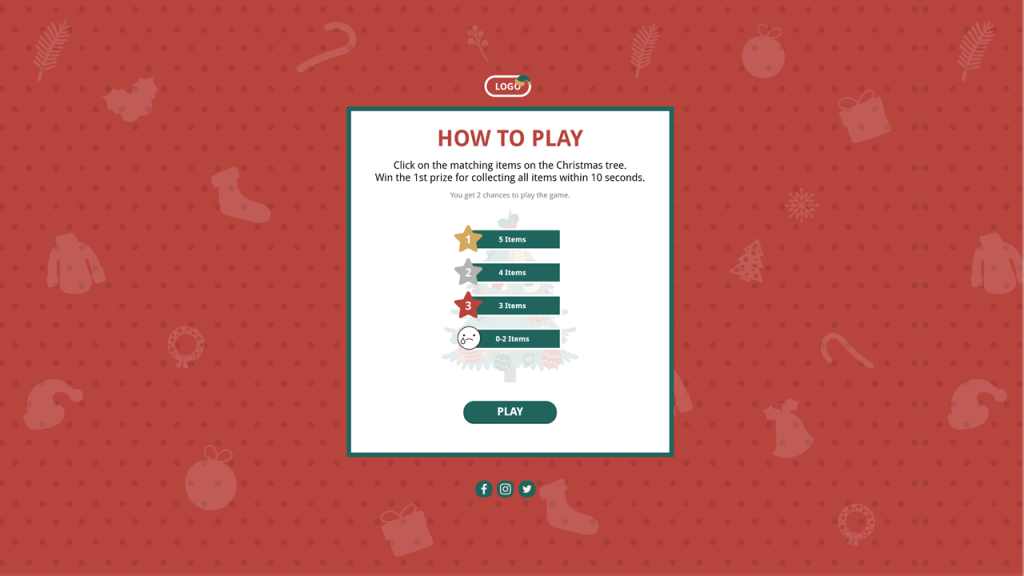
9. Strategy Games
Another way of incorporating games in marketing strategies are strategy games. Strategy games are games where participants make active choices that can impact the outcome of the game. For example, old-school strategy games can include Tic Tac Toe, Monopoly, and Chess.
Strategy games generally require a higher level of involvement from participants, but they are often perceived as more entertaining because you need to think about what you should do. Strategy games can be very short (for example, Tic Tac Toe) or quite long (for example, a Banking Game where you buy stocks). Some strategy games might even last for days, weeks, or even months.
An idea here could be to have a fun Marketing Game where participants need to sign into their profile every day to do a couple of actions (such as rolling dice, drawing a card, buying a special item, and so on). This is amazing because they go back to your website daily to perform these actions. So, every day they are aware that you are there. It’s great for boosting sales and brand loyalty because it plays with the mere exposure effect.
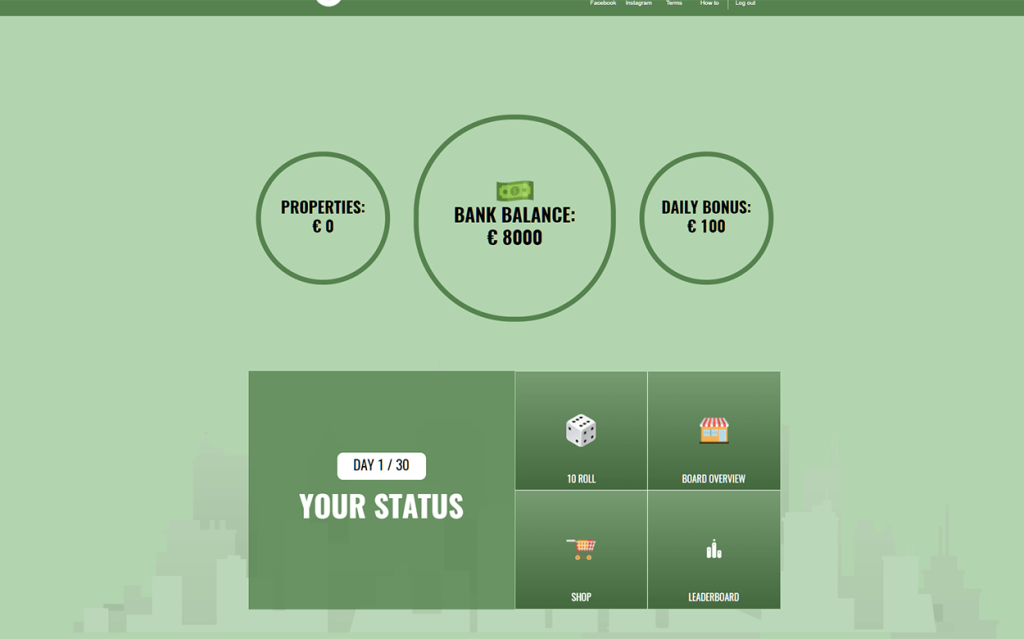
10. Gamified Landing Page
A gamified landing page turns a regular website entry point into an Interactive Experience. By incorporating game elements such as challenges, rewards, and a scoring system, businesses can enhance user engagement. This not only provides an entertaining experience but also encourages visitors to spend more time exploring the website. Furthermore, gamified landing pages have the potential to boost brand awareness and customer loyalty. When users find enjoyment and value in navigating a website with gamified elements, they are more likely to remember the brand positively.
Ultimately, the incorporation of gamification not only transforms a website visit into a memorable experience but also serves as a strategic tool for businesses to strengthen their online presence and connect with their audience in a meaningful way.
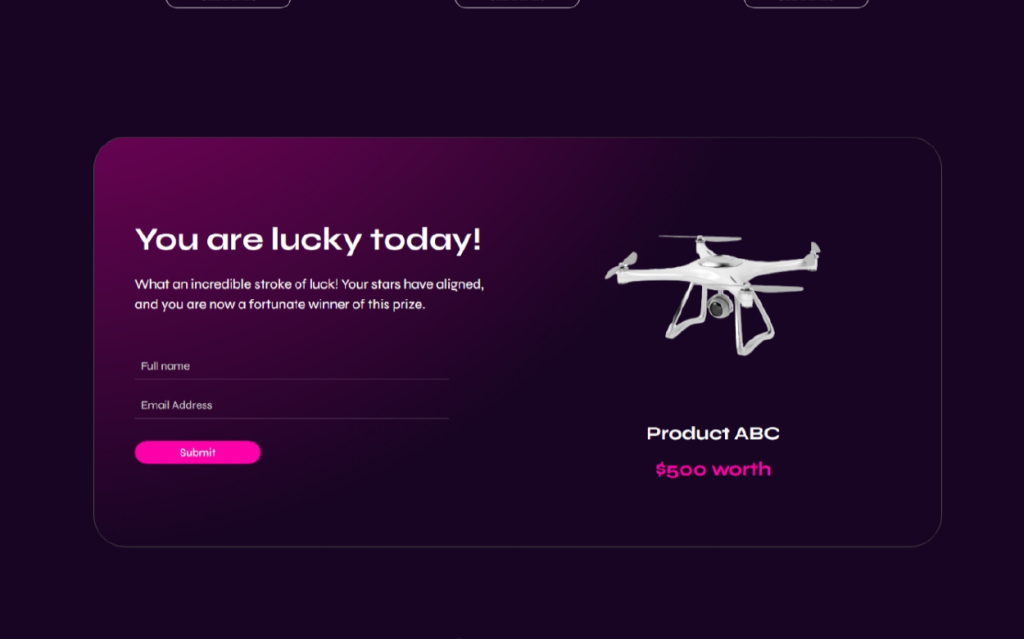
11. Product Recommender Games
Product Recommender games leverage gamification to help customers discover products that best suit their preferences. Participants answer a series of questions or engage in interactive scenarios, and based on their responses, the game recommends products from the company’s inventory. By inviting customers to actively participate in the decision-making process, businesses not only guide them toward suitable products but also empower them with a sense of control. This interactive approach transforms the often-mundane task of discovering a product into an enjoyable and informative journey. As users engage with the game, they gain insights into their own preferences and explore options they might not have considered otherwise.
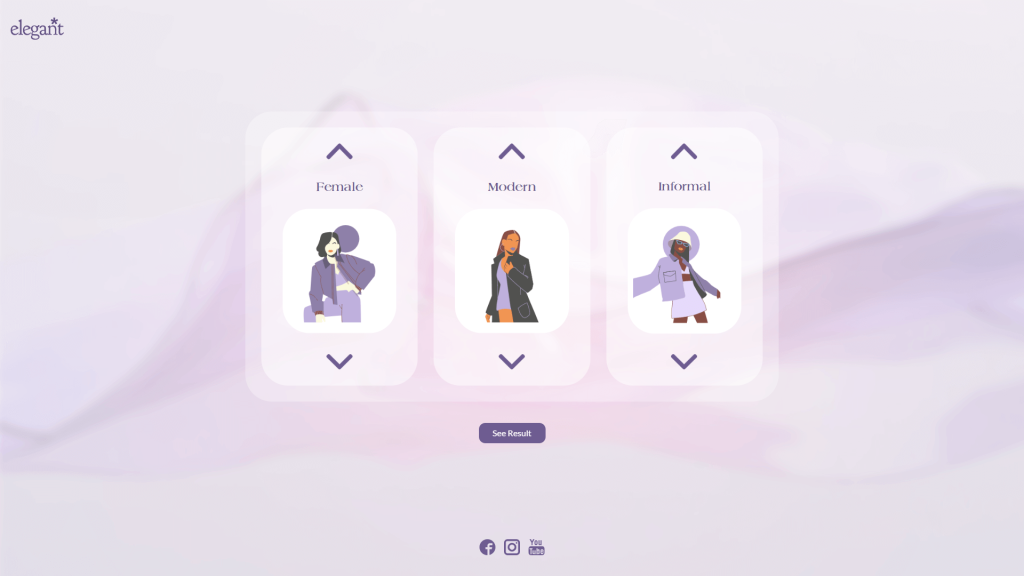
12. Social Interactive Content Games
These online Marketing Games are designed to be shared on social media platforms, encouraging participants to interact with the brand’s content. Whether it’s a quiz, a challenge, or a collaborative game, the goal is to create content that is not only enjoyable but also shareable, thus expanding the reach of the brand.
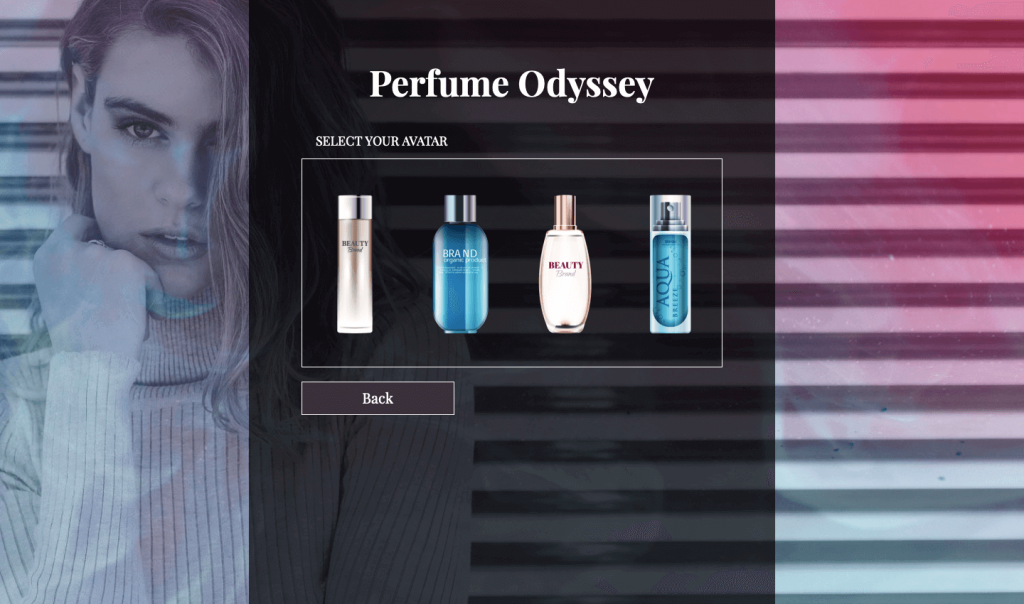
This organic, word-of-mouth promotion is invaluable in the digital landscape, as it carries the authenticity and enthusiasm of genuine customer endorsement. The ripple effect of social sharing not only amplifies the brand’s visibility but also fosters a community around shared interests and experiences.
Pro Tip: Include social sharing buttons and incentivize participants to share their results for increased visibility.
13. Seasonal Holidays Games
Seasonal holidays games capitalize on the festive spirit to engage customers. These games are often themed around specific holidays and can be included in Online Advent Calendars, Interactive Flipbooks and more! For example, incorporating promotional games like a spin and win game in an Online Advent Calendar can transform the traditional countdown to the holiday season into an interactive and delightful experience. Users can eagerly engage with the spin and win game each day, unveiling surprises, discounts, or exclusive content behind each virtual door.
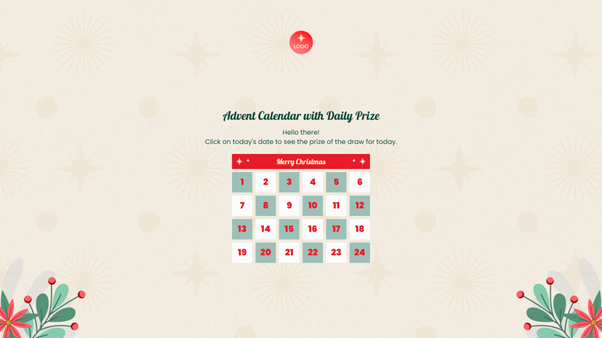
This not only keeps customers eagerly checking in during the holiday season but also cultivates a sense of loyalty by associating the brand with memorable and joyful moments.
14. Hourly Games
Hourly games are time-sensitive and change periodically throughout the day. Participants can engage with different promotions depending on the hour. This type of gamification keeps users coming back at various times, increasing overall customer engagement. By incorporating interactive Marketing Games and offering different promotions at different time slots, businesses encourage users to check in regularly thus increasing website traffic. The time-sensitive nature of these games instils a sense of urgency, making participation more compelling as users strive to catch the latest opportunity.

Pro tip: These templates are ready to plug into your mobile marketing strategy—especially if you’re in the beauty business.
Ready to implement some of these types of Marketing Games?
In summary, Marketing Games have been present since 1987, and they are not only a trend in business but rather a tradition. The versatility of gamification allows its application in any industry and to any type of business. That’s the beauty of applying it across various industries and businesses. When executed thoughtfully, these games have the potential to not only drive customer acquisition and retention but also foster a positive brand image and lasting customer loyalty. Remember, the key to successful gamification in marketing is to align the game mechanics with your brand, keeping it relevant and enjoyable for your target audience.
For a quick and hassle-free implementation of Marketing Games on your website, explore our marketplace with ready-to-use templates. Our Interactive Content platform is your gateway to effortlessly create compelling games that resonate with your target audience. It’s not just about playing games; it’s about crafting memorable experiences that leave a lasting impression. And the best part? Getting started is as simple as signing up for a free account.
Sign up for a free account, experiment with our gamification templates for free, and when you’re ready to launch, choose a subscription that suits your needs and goals. Elevate your marketing strategy with the power of gamification – start creating today!
This blog post was updated by Felicia Rozario on November 16th, 2023.

